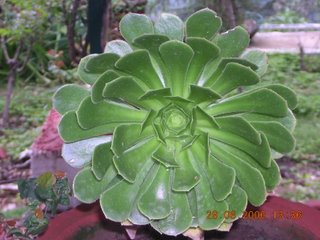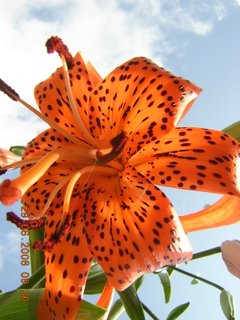
"There is a lion in the way; a lion is in the streets."
Proverbs xxvi. 13.
Go rambling without purpose on a Sunday afternoon & who knows what you will discover by the road-side?
I love travelling. I love Shimla. I love travelling to and living in Shimla. Ergo, this photo-blog is dedicated to Shimla. Mostly.
gal-uh-MAW-free\, noun.
Originally meaning "a hash of various kinds of meats," "gallimaufry" comes from French galimafrée; in Old French, from the word galer, "to rejoice, to make merry"; in old English: gala + mafrer: "to eat much," and from Medieval Dutch maffelen: "to open one's mouth wide."
It's also a dish made by hashing up odds and ends of food; a heterogeneous mixture; a hodge-podge; a ragout; a confused jumble; a ridiculous medley; a promiscuous (!) assemblage of persons.
Those of you who know me, will, I’m sure, understand how well some of these phrases (barring the "promiscuous" bit!) fit me.
More importantly, this blog is an ode to my love for Shimla. I hope to show you this little town through my eyes. If you don't see too many people in it, forgive me, because I'm a little chary of turning this into a human zoo.
Stop by for a spell, look at my pictures, ask me questions about Shimla, if you wish. I shall try and answer them as best as I can. Let's be friends for a while....
 This is a picture of an aeonium. Since I am nt particularly knowledgeable about plant, I'm still undecided as to whether this is an "Aeonium undulatum" or an "Aeonium arboreum". The plant has succulent rosettes of waxy leaves, generally at the end of naked stems.
This is a picture of an aeonium. Since I am nt particularly knowledgeable about plant, I'm still undecided as to whether this is an "Aeonium undulatum" or an "Aeonium arboreum". The plant has succulent rosettes of waxy leaves, generally at the end of naked stems.
 Okay, I know this one - gladiolus!
Okay, I know this one - gladiolus!
Gladiolus is a genus of perennial flowering plants which belong to the iris family (Iridaceae). About 10 species are native to India. The long, sword-like leaves look particularly atractive.
 Tiger-lily. Also known as Columbia lily or lilium columbianum. What a stunning plant with its waxy orange leaves and dramatic black speckles!
Tiger-lily. Also known as Columbia lily or lilium columbianum. What a stunning plant with its waxy orange leaves and dramatic black speckles!
A school-going friend supplies the following information (TMI?):
Kingdom: Plantae -- Plants
Subkingdom: Tracheobionta -- Vascular plants
Superdivision: Spermatophyta -- Seed plants
Division: Magnoliophyta -- Flowering plants
Class: Liliopsida -- Monocotyledons
Subclass: Liliidae
Order: Liliales
Family: Liliaceae -- Lily family
Genus: Lilium -- lily
Species: lilium columbianum
 Iberis - Candytuft. This perennial comes into bloom the last part of April and lasts through June in Shimla. In fact, this plant I have photographed was the last of a straggling group. I love its evergreen foliage (not visible here) as it provides a lovely dark backdrop to these delicate flowers. Kungfoo_Kitty helpfully adds here that it also has wonderful medicinal properties.
Iberis - Candytuft. This perennial comes into bloom the last part of April and lasts through June in Shimla. In fact, this plant I have photographed was the last of a straggling group. I love its evergreen foliage (not visible here) as it provides a lovely dark backdrop to these delicate flowers. Kungfoo_Kitty helpfully adds here that it also has wonderful medicinal properties.  Foxglove is the common name for plants of the Digitalis species. These plants, biennial or perennial, are native to the Mediterranean region, and can reach heights of 1.2 to 2 meters. The primary value of foxglove is medicinal - digitalis, a cardiovascular drug extracted from the leaves, is the most effective drug available for heart failure caused by hypertension or arteriosclerosis.
Foxglove is the common name for plants of the Digitalis species. These plants, biennial or perennial, are native to the Mediterranean region, and can reach heights of 1.2 to 2 meters. The primary value of foxglove is medicinal - digitalis, a cardiovascular drug extracted from the leaves, is the most effective drug available for heart failure caused by hypertension or arteriosclerosis.
The love of learning, the sequestered nooks,
And all the sweet serenity of books. (Longfellow)
